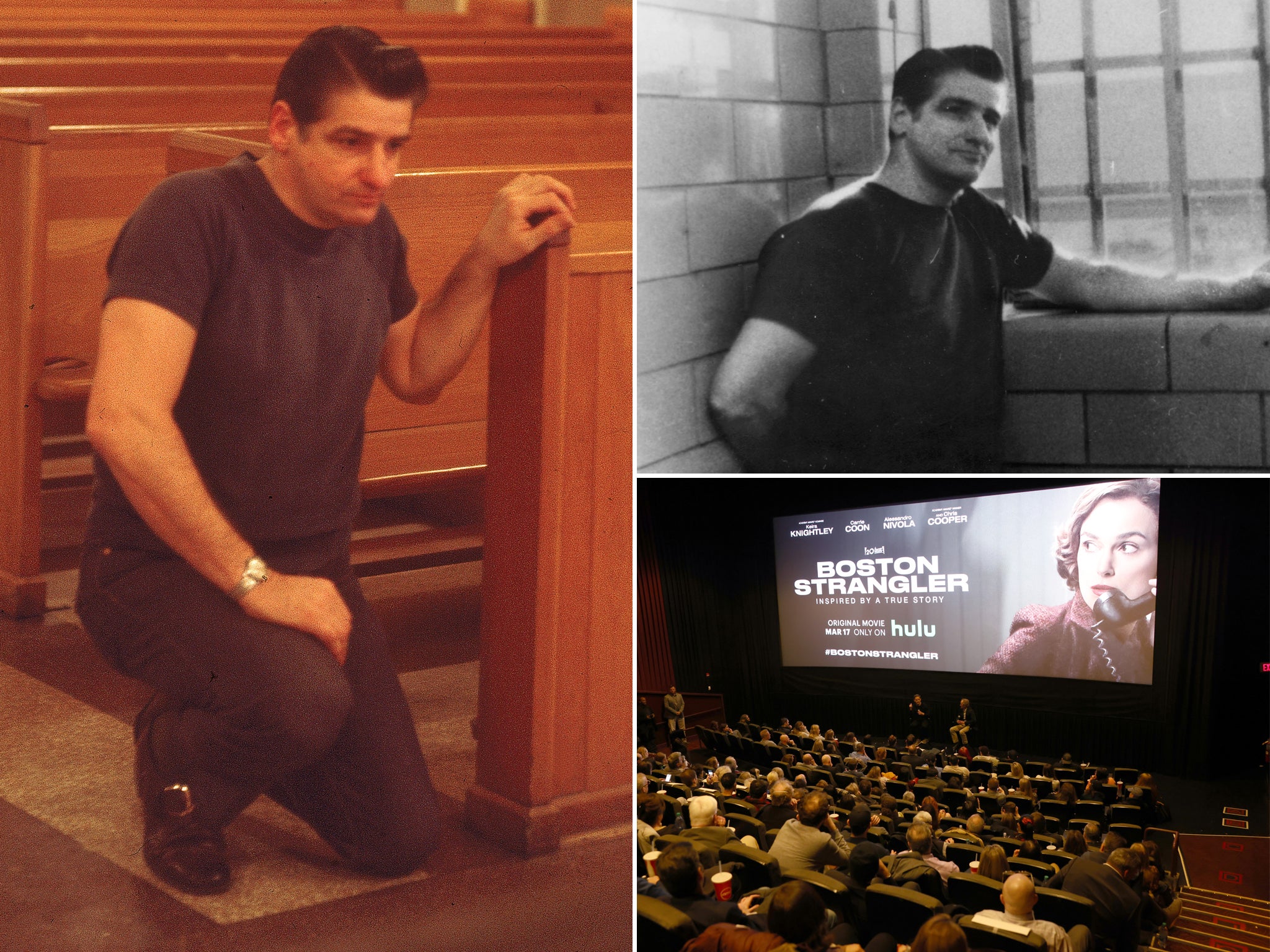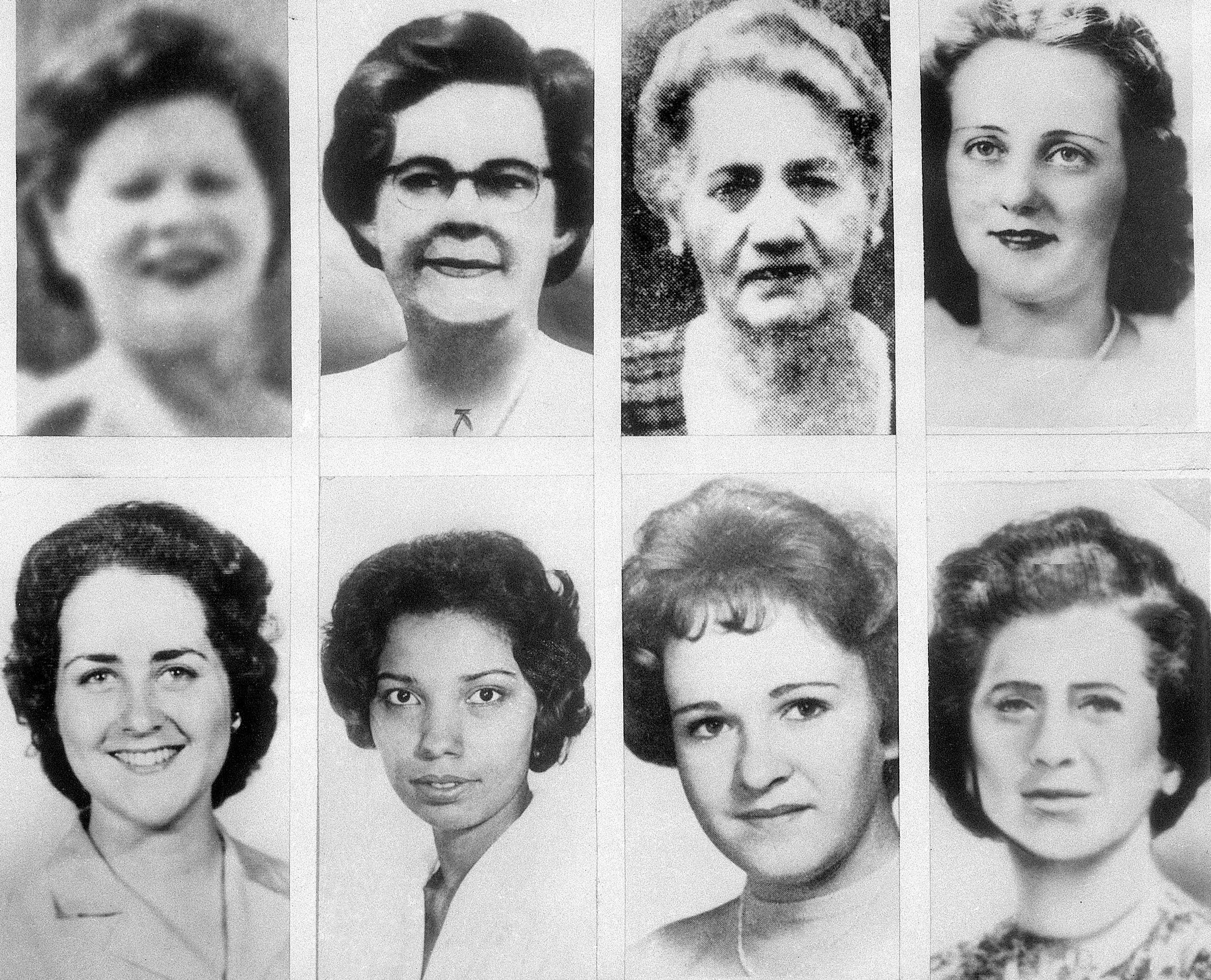Two years of terror, at least 11 women killed and no charges in 60 years: Was the Boston Strangler ever caught?
More than 60 years after the Boston Stranger took their first of at least 11 victims, no charges have ever been brought. A new Hulu film starring Keira Knightley tells the story of Loretta McLaughlin, a journalist credited with connecting the string of murders. Clémence Michallon reports


The Boston Strangler’s first victim, Anna Slesers, was found dead on 14 June 1962. The 55-year-old had been killed with the belt from her own blue housecoat.
In the months that followed, more women were found, apparently killed by the same perpetrator. By some counts, the person known as the Boston Strangler murdered 11 women; others place the number of his victims at 13 or 15.
Six decades after Slesers’s death, the story of the Boston Strangler remains in part shrouded in mystery. It is a dark, distressing true-crime saga, involving a controversial confession, breakthrough DNA evidence, and a pioneering journalist who first connected the deaths to one another. Boston Strangler, a new film on Hulu, features Keira Knightley as Loretta McLaughlin, the journalist in question, and explores her role in covering the story.
The killer’s next victim, 85-year-old Mary Mullen, was found on 28 June 1962. Per, The Boston Globe, which profiled each of the victims in 2002, two more women, 68-year-old Nina Nichols and 65-year-old Helen Blake, were found two days later, on 30 June; 75-year-old Ida Irga was found on 19 August, 67-year-old Jane Sullivan on 21 August, 20-year-old Sophie Clark on 5 December, 23-year-old Patricia Bissette on 31 December, 69-year-old Mary Brown on 6 March 1963, 23-year-old Beverly Samans on 6 May, 58-year-old Evelyn Corbin on 8 September, 23-year-old Joann Graff on 23 November, and 19-year-old Mary Sullivan on 4 January 1964.
The women were found in their homes. Most of them died of strangulation; Mullen was found to have died of a heart attack, and Samans had been stabbed to death.
It was unclear, at first, whether all the killings had been perpetrated by the same person. “From June 1962 to January 1964, Boston and its suburbs had eleven somewhat similar stranglings,” The Atlantic wrote in 1964. “Police are not at all certain those stranglings were the work of one man; but until they catch the culprit and, if possible, obtain a confession, they cannot be positive. The unknown always holds a certain element of terror, and because so much about the Strangler is completely unknown, and because what is known is so bizarre, he has had a far-reaching effect on the city.”

The Atlantic reported having spoken to “several young women” who said some of their friends had left Boston as a result of the killings. “Others are living under such severe strain that it is gradually undermining their health,” the magazine wrote. “In every instance these young women enter their apartments upon returning from work apprehensive of what may well happen, and despite their emotional control, they are afraid. There has been a run on hardware stores for locks, bolts, and other safeguards.”
For years, the Boston Strangler remained anonymous. Then, in 1965, a man confessed. Per CBS, Albert DeSalvo, a factory worker, was being held on unrelated charges at Bridgewater State Hospital, a facility for inmates deemed irresponsible for their actions due to mental health issues.
The confession, however, did not supply enough evidence for DeSalvo to be charged with the murders. Per WNYC, he never faced charges in cases related to the Boston Strangler killings, and ultimately recanted his confession.

In 1967, DeSalvo was found guilty in another series of attacks—“armed robbery, assault, and sex offenses involving four women,” The New York Times reported at the time. He was sentenced to life in prison. His lawyer on that case was F Lee Bailey, the same attorney who later represented Patty Hearst and OJ Simpson.
A Boston Globe article published in 1967 stated that Bailey, speaking on behalf of his client in court, “did not state directly that his client was the Boston Strangler, but he said the 13 homicides took place after DeSalvo was released from the Billerica House of correction in the Spring of 1962.” Bailey referenced those killings in an attempt to convince the jury that DeSalvo could not be held responsible for his actions, at one point referring to them as “thirteen acts of homicide by a completely uncontrollable vegetable walking around in a human body.”
The question of whether DeSalvo really was the Boston Strangler lingered. It found some partial answers over the years. In 2001, as reflected in a New York Times article published at the time, DNA from the exhumed bodies of DeSalvo and Sullivan (the woman believed to have been the Boston Strangler’s final victim) suggested that DeSalvo had not murdered her.
Those findings, however, were reversed in 2013. That year, per ABC News, more testing was performed, using DNA found on a water bottle discarded by DeSalvo’s nephew. DeSalvo was dead by then (he died in prison in 1973 after being stabbed to death in prison). The purpose of collecting the nephew’s DNA was only to establish a familial match through a relative.
Initial tests “implicated [Albert] DeSalvo and excluded 99.9 percent of the male population,” according to the National Institute of Justice (NIJ), a branch of the US Department of Justice. This, per ABC, gave authorities justification to exhume DeSalvo’s body. They did so in July 2013 and procured a new DNA sample from one of his femur and three of his teeth. According to the NIJ, “DNA specialists calculated the odds that a white male other than DeSalvo contributed the crime scene evidence at one in 220 billion – leaving no doubt that DeSalvo had raped and murdered Mary Sullivan.”
The New York Times saluted the testing as “[bringing] an element of modern scientific proof to one murder in a case that seemed likely never to be solved.” The tests, however, said nothing of the other murders in the Boston Strangler case. “We don’t claim with certainty that Albert DeSalvo is a suspect in each of them,” District Attorney Daniel F Conley told The New York Times then. “But we do believe that we stand on the threshold of unprecedented certainty regarding Mary Sullivan’s murder.” Some have posited that more than one person could have been responsible for the Boston Strangler killings.

Loretta McLaughlin, the reporter portrayed by Keira Knightley in Hulu’s film, died in 2018 aged 90. According to a Boston Globe article published at the time of her death, McLaughlin said the fourth killing in the Boston stranglings had “galvanized [her] attention”, and left her wanting to write a series of articles about the murders.
“An editor disputed the worth of a series on the four dead women, noting that they were ‘nobodies,’” she eventually wrote in the newspaper. “That was it exactly, I felt. Why should anyone murder four obscure women? That was what made them so interesting … sisters in anonymity, like all of us.”
Boston Strangler airs on Hulu starting 17 March



Bookmark popover
Removed from bookmarks